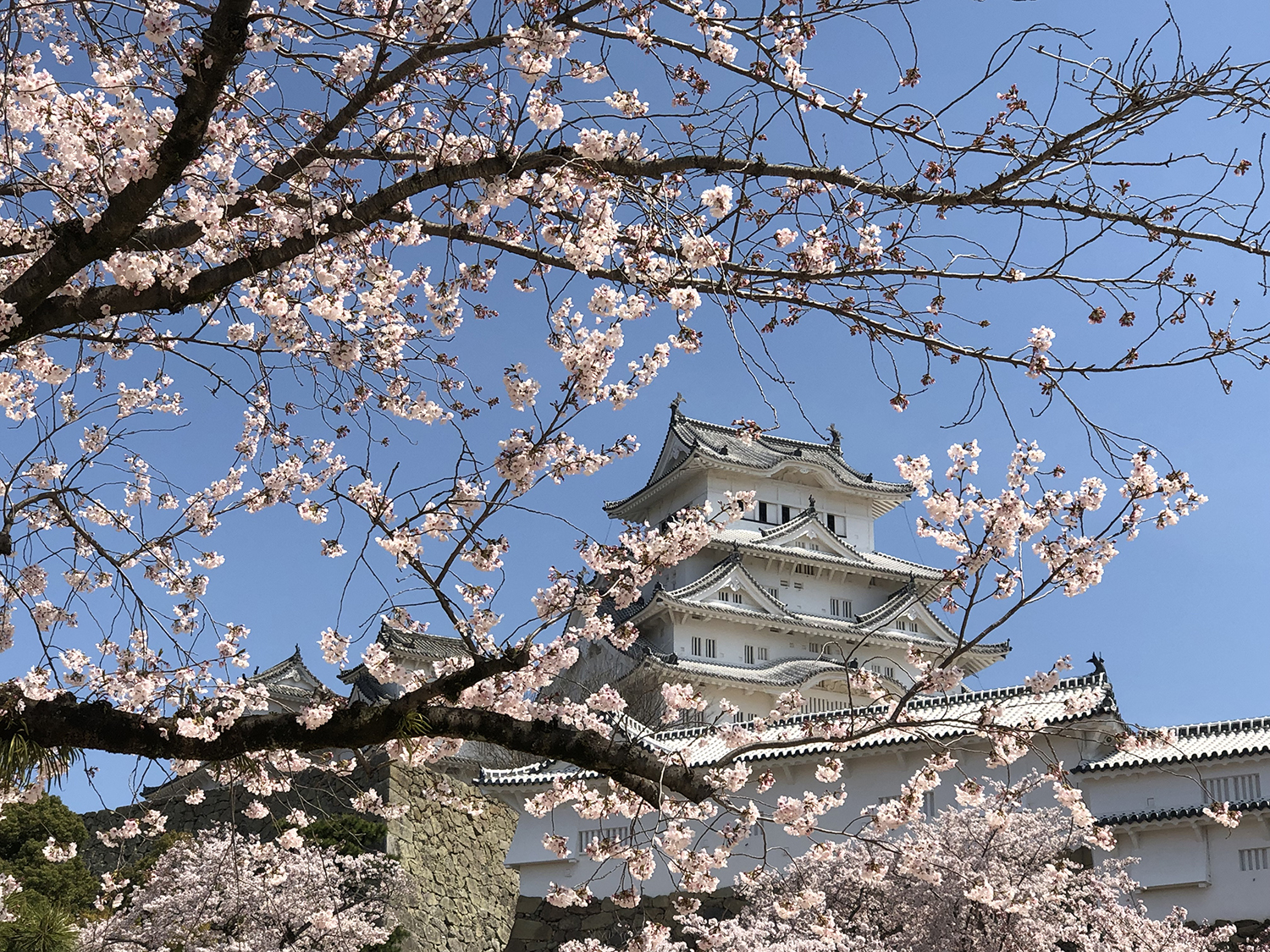Recently Michael and I witnessed the incredible scene of cherry blossom season in Japan. It is truly a remarkable sight. Clouds of pinkish-white flowers adorn dark branches that hang over green parks. blue waters, or frame distant structures. Crowds of locals stream through such areas, picnicking or strolling beneath their ancient glories, day and night. Large pink lanterns turn on at dusk to illuminate another picture altogether.
Samurai, the fierce noble “general” warriors of Japan, dating from the 12th – 19th centuries, planted cherry trees throughout their regions when not in wartime. This may seem surprising because the samurai could be quite brutal. Yet, their code included such beliefs as doing the right thing, being compassionate to the weak, and giving respect to others as well as being humble to one’s self. These principles plus their widespread Shinto beliefs in the sacredness of nature leads one to imagine ferocious warriors also being reverent with plants (as well as the decorative arts they influenced).
The cherries of the Japanese cherry trees species are not eaten because they are bitter. However, the Japanese do incorporate the flowers into some of their dishes. Picked in plum vinegar and salt, or else added in with sweets, I still found them slightly bitter in flavor but definitely a pretty addition. They also don’t use the tree medicinally.
Wild Cherry Bark
However, the wild cherry species, Prunus serotina, is widely used as medicine. Also known as choke cherry and in the Rosaceae family, its bark is best known for effectively treating coughs by calming the respiratory nerves. This includes whooping cough, bronchitis, dry cough, asthma, and bronchial asthma as well as laryngitis and hoarseness. Wild cherry bark is especially good for cough with shortness of breath. Since this herb has a warming energy, it is specific for coughs from coldness, which will show as white mucus and worsening with cold air and cold foods.
The bark is collected in the Fall for this, a perfect time as that season often sees the advent of coughs. This is also when its amygdalin is highest. In an infusion, the hydrocyanic (prussic) acid of the bark does not convert to cyanide. The amygdalin is mostly excreted through the lungs where it aids breathing and sedates the cough reflex.
For coughs, try combining wild cherry bark with other warming expectorants such as thyme leaf, elecampane root, and white pine bark. If acute with a cold or flu, add diaphoretics such as cinnamon twig, fresh ginger root, holy basil leaf, hyssop leaf and flower, lovage root, and/or osha root.
However, cherry bark has many more uses. It’s also outstanding for stomach and intestinal weakness with irritation. In Traditional Chinese Medicine, there’s a direct connection between the lungs and large intestine. Thus, herbs that treat the lungs may also have impact on their intestinal partner. In this case, wild cherry bark treats ulcers, gastritis, diarrhea, dysentery, and colitis. For these conditions it combines well with such herbs as licorice, ginseng, cyperus, anise, and/or tangerine peel.
Sweet Cherry Stems
As well, cherry stems from Stipites cerasorum are invaluable for bladder problems including cystitis, if due to coldness. Bitter and astringent, these stems from the fruit of the cherry tree are diuretic, anti-inflammatory and mildly astringent. They work brilliantly when nothing else does if the person is cold and deficient without burning urination. A favorite European remedy, cherry stems may be found powdered in capsules.
This Spring seems to be rampant with colds, coughs and flu again, not to mention pneumonia. If you have a cough with white phlegm, gastric upset, or a bladder infection from cold, give wild cherry bark or cherry stems a try!
NOTE: Hydrocyanic acid is toxic as a general protoplasmic poison in sufficient amounts, which is especially found in the wilted leaves of wild cherry.
Wild Cherry (Prunus serotina)
Energy and flavors: Warm, acrid, astringent, slightly toxic
Organs and channels affected: Spleen, Lung
Chemical constituents: Hydrocyanic acid, amygdalin, isoamygdalin, organic acids, tannin
Properties and actions: Antitussive, pectoral, astringent, carminative; transforms Phlegm and stops coughing and wheezing, directs Qi downward
Caution: In pregnancy and lactation (see NOTE)
Dosage and preparation: Standard hot or cold infusion. Do not boil, as boiling de- stroys amygdalin, which is the main active constituent. Tincture (1:2 @50% ABV w/10% glycerin fresh; 1:4 @50% ABV w/10% glycerin), 10-15 drops TID.

